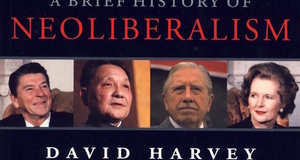Ethics of the Far Future: Why Longtermism Does Not Imply Anti-Capitalism
By
2021, Vol. 13 No. 11 | pg. 1/1
IN THIS ARTICLE
KEYWORDS
AbstractIt has recently been argued that longtermism it at odds with capitalism. It is said that while longtermism places great emphasis on the value of far future benefits, capitalism neglects the future by favouring short-term gains. Therefore, those who are sympathetic to longtermism should support an anti-capitalist solution. In this article, I argue that after we make this claim more precise it becomes clear that anti-capitalism is not the only solution for longtermists. Instead, they can adopt Schwartz’s capitalist reforms centred around the legal basis for a corporation to act as an immortal investor. I then draw on the work of Quigley and Stout to show that these capitalist reforms are not only as effective as the anti-capitalist solution, but also as feasible. Finally, I respond to objections concerning the long-run efficacy of the capitalist reforms and the possibility that capitalism has additional, unaddressed faults. I conclude that longtermists are not required to adopt anti-capitalism. 1. IntroductionThe future has the potential to be vast and prosperous. The small set of humans who have lived thus far may be dwarfed by the huge number of future generations who are yet to exist. The future also has the potential to be cut short or to be so terrible that our descendants will wish human life had ended sooner. These reflections on our future potential have motivated support for longtermism: the claim that in our most important decision contexts the best option is the option which is best for the very far future. More recently, it has been argued that this commitment to the far future is at odds with capitalism. The capitalist system is said to preclude longtermist options by systematically neglecting the interests of future people. I argue that this view is mistaken and therefore subsequent calls for longtermists to adopt anti-capitalism are misguided. Below I outline the motivations for longtermism and then offer a set of decision contexts for which longtermism holds true. In section 3, I expand on the work of Venkatesh by examining why capitalism may be seen as the antithesis of longtermism due to discounting and externalities. In section 4, I explore Schwartz’ work on the perpetual corporation. The legal basis for the perpetual corporation shows how we might constitute corporate business activity in a way that respects future generations. Specifically, a perpetual corporation can justify a low rate of discounting and a vast investment time horizon to counteract the faults of capitalism without removing the underlying profit-focus. In section 5, I argue that these reforms are at least as feasible as dismantling capitalism. This claim is strengthened by Quigley’s conception of the universal investor and Stout’s conception of the shares market as a time machine for value, both of which incentivise the reforms and deter opposition. In the final section I anticipate and respond to two objections.2. The Thesis of LongtermismIn its most basic form, longtermism claims that the best option is that which is best for the far future. The thesis is typically justified by four premises – two empirical and two evaluative. The first premise states that there are, in expectation, an extremely large number of future people. The second premise states that we ought to adopt a zero rate of pure time preference (or impatience) such that we do not discount the well-being of these future people. The third premise claims that there are ways we can alter our established practices that will predictably influence the well-being of these future people.1 The final premise states that the best option is that which maximises wellbeing. Thus if we can expect a vast number of future generations, and if the well-being of a future person is weighted equally to that of a present-day person, then the value of an option that is best for the far future is likely to swamp the value of an option that is best for the short-term (Greaves and Macaskill 2021). 2.1. Ex Ante LongtermismTo make the thesis of longtermism more precise, I take longtermism to be the axiological claim that the best possible option within an externally given option set is the option which is best for the far future.2 For an option to be best for the far future it must have the best long-term effects, where the long-term effects occur sometime after this century. The term ‘best’ is to be understood ex ante as a claim about the expected value of an option given the information available when a decision is made.3 Therefore, the thesis of longtermism is concerned with what is best in a particular decision context. Meanwhile, the scope of longtermism is determined by the number of these decision contexts for which the thesis holds true. This gives us two possibilities: Wide Longtermism (WL): In a large set of decision contexts, the best possible option is the option which is best for the far future. Narrow Longtermism (NL): In a small set of decision contexts, the best possible option is the option which is best for the far future. The small set of decision contexts for which NL holds true is often suggested to contain only our most important decisions or those decisions that concern existential risks to humanity.4 I follow Greaves and Macaskill (2021) in taking NL to be true in the context of individual and societal resource-allocation decisions.5 I take these to be among our most important decisions due to their “particularly great significance for the well-being of both present and future sentient beings” (Greaves and Macaskill 2021). However, as I am concerned with how these decisions are affected by capitalism, I will focus exclusively on the societal context. It is these decisions about how society should spend its resources that are the most likely to be influenced by changes in our economic structures.6 Going forward, this conception of NL will be referred to as ‘longtermism’ for the sake of brevity.7 3. Capitalism and the Far FutureWe can use this precise thesis of longtermism to examine the claim that longtermists ought to adopt anti-capitalism. I take capitalism to be a system in which production decisions are made by business corporations who are subject to the constraints of market competition.8 These business corporations are legal entities created via the process of incorporation for the commercial purpose of making profit. Those who adopt anti-capitalism seek to replace this system with an alternative economic structure, thereby removing the centrality of profit-focused, corporate markets.9 Perhaps the most thorough defence of the anti-capitalist claim comes from Venkatesh (2021), who argues that capitalism neglects future people by treating their interests as an externality. In an elaboration of Venkatesh’s work, I explore whether discounting and externalities lead capitalism to preclude longtermist options.10 I then consider whether anti-capitalism offers a solution. As we have seen, longtermists are concerned with decisions of societal resource-allocation. Given the vast influence of corporations within capitalist society, I assume that decisions of societal resource-allocation usually take the form of decisions about how business corporations should spend their resources.11 Therefore, if the features of discounting and externalities lead capitalism to neglect future people in this corporate decision context, and in doing so direct resources away from longtermist options, then longtermists ought to adopt anti-capitalism.12 3.1. The Long-Term and Social DiscountingCapitalism may select against longtermist options by discounting the future. Discounting with respect to time (as opposed to risk) typically occurs via a Social Discount Rate (SDR). Corporations utilise the SDR as part of their cost-benefit analysis for deciding how to spend resources. The SDR is used to lower the present value of future benefits, thereby offering a risk-free rate of return that any project must exceed in order to be deemed socially beneficial (Mogensen 2019, 3). For example, at an annual discount rate of 5%, £100 guaranteed to be received in one year will have a present-day value of £95. Thus an investor would happily pay anything below £95 for the gift of £100 received in one year’s time but would refuse to offer £96 for the same guarantee (Heinzerling and Ackerman 2007, 349). I take the SDR to utilise the structure of the Ramsey Equation (Drupp et al. 2015):13 r = δ + ηg Here, the SDR (r) is given by the sum of the rate of pure time preference (δ) and the interaction between the elasticity of the marginal utility of consumption (η) and the growth rate of consumption (g). The combination of the latter two variables provides the social element of the discount rate. Assumptions of logarithmic utility and the increased wealth of future generations often lead to a positive value for the interaction between these two variables (Drupp et al. 2015). More disagreement surrounds the correct value for δ. The rate of pure time preference, or impatience, is the rate of decline in the utility discount factor (the weight given to utility gained by consumption at a given time). A positive δ means the discount factor declines from the present point in time giving less weight to utility gained by consumption in the future. Longtermism relies on the belief that the ethical value of δ is zero (Greaves and Macaskill 2021, 18). By adopting a zero rate of pure time preference the Ramsey Equation will output a very low SDR. Therefore, the utility produced by long-term effects will be recognised during decision-making and longtermist options will be selected for. A value of zero is often justified by the assertion that an agent’s place in space and time is not a relevant feature of their moral worth, all else being equal. If the utility of a neighbour across the street ought not to carry more weight than the utility of a stranger halfway around the world, then equally, the utility of our temporal neighbours ought not to carry more weight than the utility of our temporal strangers. These intuitions are easily accommodated by impartial moral theories that treat utility as equally valuable irrespective of the recipient (Greaves 2017, 13). However, in a capitalist society, decisions of corporate resource-allocation are first and foremost profit-focused. Resources are invested in a given project if the project is expected to maximise value for the investors who yield influence over the corporation.14 Further still, the increasing dominance of shareholder primacy theory, whereby “corporations exist only to maximise shareholder value” (Stout 2013), leads to the dismissal of any secondary aims that might constrain shareholder value for the sake of the long-term. Therefore, ethical considerations of impartiality are ignored. Instead, the individual investors will frequently adopt a high value for δ that reflects the probability that they themselves will survive until a given project pays off. After all, there is little utility to be gained from returns that accrue after one’s death. This raises the SDR such that any returns expected to occur into the far future will be afforded little weight. The results of this are dramatic, at even a moderately high rate of discounting it is no longer worth spending anything today to protect the far future. For example, at a discount rate of just 3.5% any argument in favour of taking action to protect the climate based on cost-benefit analysis is undermined (Heinzerling and Ackerman 2007, 351). Since the bulk of the value of a longtermist option is generated by very long-term effects, the value afforded to such options by myopic investors is minimal. Therefore, combined with the mortality of the investors to whom the project’s value must accrue, capitalism’s profit-focus generates substantial impatience and a bias towards the short-term. Ultimately, the investors’ collective impatience will direct decisions of corporate resource-allocation away from longtermist options. 3.2. Anti-Capitalism as a Solution to DiscountingThis conflict offers partial motivation for the argument that longtermists ought to adopt anti-capitalism. If the profit-focus of capitalism leads to the adoption of a high rate of pure time preference, then plausibly, removing this profit-focus will support a low value for δ and thus a low SDR. This is the anti-capitalist approach. Under the capitalist model, longtermist options are precluded because their far future benefits are discounted significantly with respect to the current moment. This prevents their true value being recognised during decisions of resource-allocation. Removing the profit-focus removes the motivation for high returns with one’s lifetime, allowing for a lower discount rate that recognises the long-term value of longtermist options. Therefore, by adopting anti-capitalism and opposing a societal structure of profit-focused markets, longtermists can help to avoid a society that directs resources away from longtermist options. 3.3. Future People’s Interests as an ExternalityCapitalism is also said to select against longtermist options by treating that which future people have an interest in as an externality (Venkatesh 2021). Externalities occur when an effect of production is not reflected in market prices, resulting in under-priced damages to external parties (Heinzerling and Ackerman 2007, 349). For example, waste products from factory production may contaminate a nearby ecosystem. These damages remain external to the factory’s profit-focused concerns if those affected by the factory’s conduct have no means by which to decrease the market price of the factory’s products. The under-priced damages will then continue to be produced. Future people’s interests can also be conceptualised as an externality (Venkatesh 2021). Future people do not yet exist and so they are unable to affect market prices through payments or policy. Current generations are also unable to pay future generations for removing their right to a secure climate or for increasing the risk of existential catastrophe. Despite this, business corporations act according to market constraints. Therefore, decisions of corporate resource-allocation are dependent on market conditions that future people cannot influence. This leads corporate activity to underproduce that which will benefit future people while overproducing that which harms future people. By under-pricing the damages to future people caused by short-term options, capitalism increases the appeal of these options that are best for the short-term. This places capitalism at odds with longtermism.15 Capitalism is not silent on the problem of externalities. The presence of externalities is often considered a market failure that sanctions government intervention to ensure that the costs of any damages are reflected in the corporation’s bottom line. This usually involves compensation payments, policy alterations, or adjustments to property rights.16 However, these methods for correcting harms require political or legal influence to substitute for a lack of market influence. Therefore, a common requirement of capitalism’s prevailing methods for handling externalities is that those who suffer harms can exercise some form of influence over the present. Future people, due to not yet existing, lack any form of influence over the present. Thus capitalist methods for correcting externalities do not work in the case of future people.17 3.4. Anti-Capitalism as a Solution to ExternalitiesVenkatesh (2021) argues that anti-capitalism offers a solution to the problem of externalising future people’s interests. Future people are neglected because decisions of corporate resource-allocation are dependent on market conditions over which they exert no influence. By advocating for the replacement of the profit-focused market structure, anti-capitalists remove this disadvantage. Therefore, rather than focusing on damages, the anti-capitalist approach simply avoids a system that promotes negative externalities as a natural consequence of decisions made under the pressures of corporate markets. Decisions that are not based on profits can acknowledge the potential damage caused by short-term options even when these damages would typically be under-priced. This resolves a key feature that places capitalism at odds with longtermist options. 4. A Solution Without RevolutionIn the previous section, it was shown that anti-capitalism promises better alternatives to the neglect of future people and the subsequent preclusion of longtermist options. However, this is not the only solution to capitalism’s ills. Below I use the work of Schwartz to show that it is possible to constitute corporate business activity in way that respects future people (Schwartz 2012). I argue that there is a legal basis for corporations to act as immortal investors with a zero rate of pure time preference and a vast investment time horizon.18 Combined with the feasibility claims I make in section 5, this legal basis shows that corporations can, and thus according to longtermists should, act as immortal investors to avoid the problems of externalities and discounting. 4.1. A Basis for Immortal InvestorsBusiness corporations are created via a grant of the state during the process of incorporation. A central result of this legal process is the “creation ex nihilo of a new legal entity” (Ciepley 2020). Here, the corporation takes on a separate legal personality that distinguishes it in law from the managers, investors, and stakeholders who act on its behalf. This grants the corporation the legal capacity to become a contracting individual, bearing all liabilities for the firm. With this, incorporation has two key benefits for forward thinking corporations: asset lock-in and perpetual existence. These two features allow corporations to act as immortal investors in the interests of future people (Schwartz 2012). First, the corporate entity owns all of the firm’s assets. As such, an investor who has given up assets to purchase stock in a corporation now lacks the legal power to demand those assets back (Stout 2015). This allows corporate entities to ‘lock-in’ assets to protect their long-term investments from the death or departure of their investors. Although this inflexibility may sound unappealing to investors, it offers a distinct advantage that alternative legal technologies of wealth aggregation do not enjoy: protection. For example, suppose a business corporation needs to attract investors to fund a venture that aligns with longtermist principles. Plausibly, this project will be long-term and may require the research and development of specialised assets that cannot be easily liquidated. With asset lock-in, the investors can be confident that their capital won’t be ‘unlocked’ in the event that one investor departs midway through the venture and demands the return of their capital. Therefore, investors can afford to risk long-term investments with a greater time horizon.19 Second, the corporation gains perpetual existence through their legal status. Theoretically, corporations can continue in spite of the death or departure of any investor and therefore have the capacity to live forever (Schwartz 2012). As we have seen in section 3.1, investors rationally adopt a positive rate of pure time preference due to their mortality. The immortality of perpetual corporations allows them to rationally adopt a zero rate of pure time preference as their perpetual existence guarantees their survival until any long-term investments pay off. With a zero value for δ, investment opportunities that were once inefficient become highly rewarding, especially investment in projects with high potential returns in the long-term future. Therefore, perpetual existence grants corporations the ability to capitalise on opportunities that mortal investors will not see the benefit from. Possessing both capital lock-in and perpetual existence means that corporations have the legal basis to become ‘immortal investors’ – able to rationally maintain an incredibly long investment time horizon with a zero rate of pure time preference. This investment strategy offers key advantages to avoid the negative effects of capitalism. 4.2. Immortal Investors on DiscountingIn section 3.1, we established that profit-focused decision-making combined with the mortality of investors to generate a positive value for δ. This led to a high level of overall discounting in decisions of corporate resource-allocation. Anti-capitalism offered a solution by removing the underlying market structure and thus the profit-based aims of corporate activity. The strategy of immortal investing offers an alternative solution by instead removing the mortality of investors while maintaining the profit-focused market structure. The immortal investor’s perpetual existence allows them to rationally adopt a zero rate of pure time preference, lowering the overall SDR used during decisions of corporate resource-allocation. The corporation is then able to recognise the effects of longtermist options with significant benefits into the far future. A rational cost-benefit analysis will then direct corporations towards such opportunities, aligning the business corporation with longtermism.20 4.3. Immortal Investors on ExternalitiesIn section 3.3, I followed Venkatesh in arguing that capitalism treats future people’s interests as an externality since they cannot affect market prices. This leads to the overproduction of harms to future people and puts capitalism at odds with longtermist options. Again, anti-capitalism offered a solution by removing the profit-focused market structure, thereby avoiding a system that promotes negative externalities as a natural consequence of decision-making within market constraints. The Immortal investing strategy offers an alternative solution by extending the investment time horizon of perpetual corporations. By increasing their temporal scope, the corporations that exist today also become future entities. This grants the corporation a rare combination of features in being a future entity which retains influence over the present. Thus they do not suffer from the same fate as future generations in lacking the necessary influence over the present. Instead, large groups of immortal investors can influence the present market and deter the selection of short-term options by accurately pricing the damages they create. 5. Feasibility and the Far FutureThere remains a problem of feasibility. If we accept that large groups of immortal investors can offer a solution that reconciles capitalism with longtermism, it may be wildly implausible that such reforms will occur. I believe we have good reason to assume that the solution of immortal investors is not overcome by such feasibility constraints. Recall that the alternative solution is anti-capitalism. Thus we are concerned here with relative feasibility, that is, whether the capitalist reforms are as feasible as an anti-capitalist revolution. At the least, anti-capitalism implies a significant overhaul of our economic structure to remove the influence of profit-focused corporate markets. Plausibly, the capitalist reforms are at least as feasible as dismantling capitalism. However, it may still be argued that the ethos of capitalism is so at odds with the proposed reforms that the structural overhaul of anti-capitalism is more feasible than this proposed contortion of the capitalist system.21 The most troubling example of this would be the effects of the continued presence of individual investors. Remaining within the capitalist structure arguably leads to an increase in mortal investors who remain driven by largely profit-focused aims. The corporation still needs to attract investors by offering a minimum expected rate of return on any investments. This cost of capital is dictated by the market via the weighted average discount rate of all the potential investors (Schwartz 2012, 821). We have seen that mortal investors adopt a positive rate of pure time preference due to their limited existence, thus driving up the cost of capital until it exceeds what an immortal investor can offer. As such, the corporation must adjust its investment strategy to focus on the short-term, ignoring the interests of future generations as it is “forced to invest as if it were mortal” (Schwartz 2012, 829). Anti-capitalism avoids these feasibility problems that are generated by the ethos of profit-focused markets. 5.1. Two Solutions for Feasibility ConstraintsFortunately, the capitalist system supports additional strategies that aid the implementation of immortal investor reforms. These strategies increase the likelihood that mortal investors will be unwilling or unable to maintain their adversarial stance. The first strategy comes from Quigley’s (2019) work on the presence of universal investors. A universal investor is a large institutional investor with a diverse investment portfolio and a long investment time horizon. The combination of these two features leaves their investments vulnerable to long-run externalities. It also renders much of their investments impossible to hedge as unwanted damages from one corporation are internalised elsewhere in the portfolio. Therefore, the universal investor is motivated to correct externalities across space and time by taking a holistic approach focused on the long-term health of the economic whole. Quigley argues that universal investors might use the UN’s Sustainable Development Goals as a measure of their success, acting more like governments than traditional investors. This would include a focus on the stability and growth of the middle class and the prevention of great market failures such as existential risks (Quigley 2019). The presence of universal investors in the market has two notable effects. First, as institutional investors with a low discount rate and vast time horizon they form part of the group of potential investors who favour the long-term. Their collective presence dilutes the impatience of mortal investors to lower the market’s overall discount rate. Therefore, corporations who wish to use immortal investing strategies will be able to attract investors with a rate of pure time preference well below that of the average mortal investor (Schwartz 2012, 820). In addition to this passive influence, universal investors can work together as a global collective to coordinate more active efforts to protect the global commons from myopic tendencies. Large groups of universal investors are able to wield significant amounts of capital as leverage. With this, they can pressure corporations into following sustainable development practices that prevent complex, long-run externalities.22 In doing so, they help to adjust global expectations of corporate activity with regards to sustainable practices, again putting pressure on any opposing investors. The second strategy comes from the work of Stout on value efficient shares markets. While universal investors render mortal investors unable to create feasibility problems for immortal investing reforms, a value efficient shares market makes these myopic investors unwilling to maintain their opposition. Stout (2015) argues that reasonably value efficient markets (such as the US stock market which is at least factor-2 efficient) allow mortal investors to see the value of long-term projects by simply selling their shares to a younger investor. A younger investor can afford to be more patient and will adopt a greater investment time horizon. Therefore, younger investors will value the shares more greatly because they will be around when future returns are realised. This process of handing shares to younger, more patient investors can continue ad infinitum. Thus the value of shares in a reasonably efficient market will roughly map the expected value of the corporation’s future returns on long-term investments. This allows for future value to be effectively transported back in time to incentivise present day investors to look beyond the short-term (Stout 2015). With these strategies, mortal investors will be unwilling or unable to pressure corporations into abandoning their immortal investment strategies. Therefore, it is not likely that the ethos of capitalism is at odds with the proposed reforms in a way that creates significant feasibility constraints. In fact, since these reforms remain effective only once we assume that investors are profit-focused, the ethos of capitalism ultimately serves as a support for the feasibility of immortal investment reforms. 6. Anticipating ObjectionsIn this final section I respond to two objections. Rather than focusing on whether the reforms can or will be implemented, these objections deny that the reforms will work effectively once they are already in place. The first objection concedes that the capitalist reforms will work for moderate timescales but claims anti-capitalism is the best solution in the very long-term. The exact timescales with which this objection is concerned may differ; the crucial component is the notion that the capitalist reforms become less effective as we shift our focus further into the future. This claim is untrue concerning externalities. Recall that corporations who act as immortal investors draw upon the legal basis of perpetual succession such that they can continue to exist even into the very far future. Therefore, in principle, immortal investors maintain their self-interested concern with the future no matter how far the timescale is extended. The objection is also untrue concerning discounting. The impatience of immortal investors does not grow stronger as we move our focus to greater timescales because they adopt of zero rate of pure time preference with no cumulative discounting effects. Therefore, the weight given to utility gained by consumption will remain constant regardless of whether we are looking 100 or 10,000 years ahead. Of course, this level of impatience is not the only variable in play during corporate decision-making. I have noted that common assumptions of logarithmic utility and the increased wealth of future generations often lead to a positive value for the interaction between the social variables of the SDR (η and g) (Drupp 2015). Nevertheless, these variables discount future returns based on economic factors such as future levels of consumption; they do not discount future utility.23 Therefore, immortal investor reforms are not made less effective as we look to the far future. A second objection claims there are reasons for longtermists to adopt anti-capitalism beyond discounting and externalities. For example, Venkatesh (2021) suggests economic inequality, under-priced existential risk, and finite ecological resources are also reasons for longtermists to reject capitalism. Though a full analysis of this objection is beyond our scope, there are initial reasons to doubt its strength. First, the argument from limited resources and the argument from under-priced existential risk are accommodated by the solution of immortal investors. A concern for the sustainable use of resources is part and parcel of adopting a very long investment time horizon. It is also plausible that immortal investors will give the threat from existential risks the weight it deserves given their focus on long-term projects that are exposed to an annual risk of existential catastrophe. In addition, having this scope for understanding existential risks is also part of the appeal of the universal investors that support the immortal investing reforms.24 The objection from economic inequality is the most plausible. Recent work suggests that economic growth creates inequalities which lead to weak institutions and increased unrest, both of which contribute to the risk of existential catastrophe (Schmidt and Juijn 2021). Given that such risks are a key concern for longtermists, and assuming anti-capitalism would reduce economic inequality, the anti-capitalist solution does appear to be a better option. However, there are benefits to economic growth that support the opposite conclusion. Despite being linked to an increase in existential risk in the short-term, it has also been argued that economic growth may lead to a decrease in existential risk in the mid to long-term. For example, economic growth may help us to quickly transcend the hazardous “time of perils” in which we currently find ourselves.25 Therefore, although this deserves further investigation, I tentatively conclude that this objection also fails to show that longtermists ought to adopt anti-capitalism. 7. Summary and Concluding RemarksThroughout this paper I have brought novel contributions together with the work of various authors to better understand requirements of a commitment to longtermism. The thesis of longtermism claims that the best option is the option which is best for the far future. This appears to place it at odds with the myopic tendencies of capitalism. In making this claim more precise, I have argued that the focus turns to whether the capitalist features of discounting and externalities preclude longtermist options in the context of corporate resource-allocation. Initially, it seemed plausible that longtermists should adopt anti-capitalism. Capitalism’s corporate profit-focus combines with the mortality of investors to generate significant discounting of future welfare. Further, future people cannot direct corporate decision-making because they lack any influence over current market conditions. Both of these problems may be solved by removing the profit-focused market structure of capitalism. However, I then presented a case for possible reforms that are centred around the legal basis for corporations to act as immortal investors. These were argued to be as effective as the anti-capitalist solution. The corporation’s powers of perpetual existence and asset lock-in enable them to adopt a zero rate of pure time preference and a vast investment time horizon. In turn, this immortality removes the fixation on short-term profit that drives high levels of discounting. It also grants the corporation a rare combination of features in being a future entity which retains influence over the present. I argued that immortal investor reforms are plausible by anti-capitalist standards, especially once the presence of universal investors and a reasonably value efficient market reduce the influence of mortal opponents. Finally, the reforms avoid two objections because they remain effective into the very far future and can successfully counteract additional faults of capitalism. Therefore, in presenting this case, I have offered an alternative which shows that longtermists need not adopt anti-capitalism. ReferencesAschenbrenner, Leopold. 2020. “Existential Risk and Growth.” GPI Working Paper No. 62020, Global Priorities Institute, Oxford. https://globalprioritiesinstitute.org/wp-content/uploads/Leopold-Aschenbrenner_Existential-risk-and-growth_.pdf Ciepley, David. 2020. “How America’s Corporations Lost their Public Purpose, and How it Might be (Partially) Restored.” Accounting, Economics, and Law: A Convivium 10, no. 3: 1–25. https://doi.org/10.1515/ael-2019-0088 Drupp, Moritz, Mark Freeman, Ben Groom, and Frikk Nesje. “Discounting Disentangled.” Centre for Climate Change Economics and Policy Working Paper No. 195-2015. https://www.lse.ac.uk/granthaminstitute/wp-content/uploads/2015/06/Working-Paper-172-Drupp-et-al.pdf Greaves, Hilary. 2017. “Discounting for Public Policy: A Survey.” Economics and Philosophy 33, no. 3: 391–439. https://doi.org/10.1017/S0266267117000062 Greaves, Hilary and William Macaskill. 2021. “The Case for Strong Longtermism.” GPI Working Paper No. 5-2021, Global Priorities Institute, Oxford. https://globalprioritiesinstitute.org/wp-content/uploads/The-Case-for-Strong-Longtermism-GPI-Working-Paper-June-2021-2-2.pdf Heinzerling, Lisa and Frank Ackerman. 2007. “Law and Economics for a Warming World.” Harvard Law and Policy Review 1, no. 2: 331–362. Mogensen, Andreas. 2019. “The Only Ethical Argument for a Positive δ?” GPI Working Paper No. 6-2019, Global Priorities Institute, Oxford. https://globalprioritiesinstitute.org/wp-content/uploads/Andreas-Mogensen_the-only-ethical-argument-for-positive-delta.pdf Ord, Toby. 2020. The Precipice. London: Bloomsbury Publishing. Quigley, Ellen. 2019. “Universal Ownership in the Anthropocene.” SSRN Electronic Journal. https://dx.doi.org/10.2139/ssrn.3457205 Stout, Lynn A. 2013. “The Shareholder Value Myth.” The European Financial Review, April 27. ———. 2015. “The Corporation as a Time Machine: Intergenerational Equity, Intergenerational Efficiency, and the Corporate Form.” Seattle University Law Review 38, no. 1: 685–723. https://scholarship.law.cornell.edu/cgi/viewcontent.cgi?article=2600&context=facpub Schmidt, Andreas and Daan Juijn. 2021. “Inequality and the Long-Term Future.” GPI Working Paper No. 4-2021, Global Priorities Institute, Oxford. https://globalprioritiesinstitute.org/wp-content/uploads/Inequality-and-the-Long-Term-Future_Andreas-Schmidt-and-Daan-Juijn-reupload.pdf Schwartz, Andrew A. 2012. “The Perpetual Corporation.” George Washington Law Review 764, no. 1: 764–830. https://scholar.law.colorado.edu/cgi/viewcontent.cgi?article=1443&context=articles Thorstad, David. 2021. “The Scope of Longtermism.” GPI Working Paper No. 6-2021, Global Priorities Institute, Oxford. https://globalprioritiesinstitute.org/wp-content/uploads/Scope-Longtermism.pdf Venkatesh, Nikhil. 2021. “Capitalism and the Very Long Term.” Paper presented at the Understanding Value Conference X, University of Sheffield. Endnotes1. This ‘predictable influence’ may come in the form of tiny probabilities of large increases in overall well-being. 2. Here, each decision context is accompanied by a set of options. The options available in each set are externally given insofar as they are determined independently of the agent’s current decision. 3. I take ex ante value to be risk-free expected value (as opposed to an alternative such as risk-weighted expected value). 4. I take it that Thorstad’s discussion on the scope of longtermism can be accurately described as a claim that longtermism holds true for decisions that concern existential risks, though Thorstad himself does not make this claim (Thorstad 2021). 5. I assume that we can talk of ‘societal decision-making’ as though collective society were acting as singular agent. 6. As I mention later in the article, this is mainly because decisions about how society should spend its resources become decisions of corporate resource-allocation when the society in question is capitalist. Therefore, the decision-making process is altered dramatically once the society adopts anti-capitalism and removes the profit-focused market structure that once directed their decisions. It is plausible that decisions of individual resource-allocation are affected in largely meaningless ways by these large structural changes, at least with regard to longtermist priorities. 7. It is also possible that those who adopt WL will find the conclusions of this paper compelling. In this case, the specifics of the large set of decisions for which WL holds true are unimportant, so long as we make some plausible assumptions. First, that this large set of decisions includes the decisions of societal resource-allocation upon which NL is focused. This is a plausible assumption given that cause-neutral, resource-allocation decisions are typically the first to qualify as longtermist (Thorstad 2021; Greaves and Macaskill 2021.). Second, that the decisions included in NL are ex ante more valuable than the remainder of the decisions within the large set for which WL holds true. This is plausible given the significance of societal resource-allocation for future people’s welfare. With these assumptions, WL becomes convergent with NL. Thus if it is true that proponents of NL ought to be anti-capitalist, it is also true that proponents of WL ought to be anti-capitalist. 8. Venkatesh (2021) uses a similar definition, though he uses ‘private individuals’ in place of ‘business corporations’. 9. Anti-capitalism can be defined in numerous ways, I simply take anti-capitalism to be opposed to the fundamental profit-focused, corporate market structure of capitalism. This is sufficient for my argument, consistent with a plausible interpretation of Venkatesh (2021), and accommodates many of the more elaborate definitions of anti-capitalism. 10. A ‘longtermist option’ being the option within the given set that is ex ante best for the far future. In asking whether the features of capitalism preclude these options, I am concerned with whether these features direct decisions of societal resource-allocation away from longtermist options. 11. I take this to be an uncontroversial move that is consistent with the implicit assumptions made by those who believe longtermists ought to adopt anti-capitalism. 12. To be consistent with the relevant literature, I focus specifically on whether capitalism precludes what Thorstad calls “swamping longtermist options” (2021, 3). These options have the greatest benefits for the far future, but crucially, their long-term benefits are greater than the short-term effects of any available option. Without this addition, capitalism may be convergent with longtermism if it selects for longtermist options that are best for the future on the basis that they are also best for the short-term. Here, capitalism’s neglect of future people would not preclude non-swamping options and could therefore still be viewed as compatible with longtermism. For simplicity, ‘longtermist options’ refers only to the swamping variety. 13. Note that this SDR is risk and uncertainty free, focusing on the investor (social aspects) rather than the investment. 14. I use the term ‘investor’ for simplicity and to remain consistent with the work of Venkatesh. However, I acknowledge here that the term ‘investor’ is often a mis-framing, especially when used to refer to shareholders who are less supportive of corporations and more parasitic. 15. These effects of externalising future people’s interests combine with the effects of discounting the future to magnify the problem of precluding longtermist options. Discounting reduces the value of long-term options while externalising future interests increases the value of short-term options by masking their negative damages. This increases the likelihood that short-term options will be selected for over longtermist options. 16. For example, extending property rights works to correct externalities by giving those who are harmed the legal right to sue for damages to their property, thereby enabling them to affect the market by transferring costs to producers. 17. Another common feature of these corrective methods is the assumption of separation and predictability (Heinzerling and Ackerman 2007, 353). Each externality is treated as distinct and predictable in its causes and effects. This conceptualisation of externalities is inaccurate when faced with the complex, long-term problems that will greatly affect future people. For example, to understand each example of environmental damage as a separate problem with predictable causation is to neglect the reality of the interwoven matrix of unpredictable causes and effects that comprise the climate crisis. Therefore, prevailing methods of correcting externalities will also underestimate the negative consequences of short-term options. Without the ability to fully account for this damage within market prices, these corrective measures are unlikely to direct corporations towards longtermist options. 18. This time horizon would extend past this century to align immortal investors with longtermist concerns. 19. Stakeholders also benefit from this arrangement. Potential employees can risk investing time into training for positions that will be created by the corporation’s long-term project. Other corporations can risk investing in tangential endeavours without fear of becoming overspecialised or ultimately unwanted. These stakeholder ventures will in turn support the original corporation by supplying labour and attracting capital. Thus asset lock-in not only shields current assets but entices new investors and stakeholders by protecting them from fleeting investors. It therefore removes some of the risk associated with long-term, illiquid investments, enabling corporations to extend their investment time horizons (Schwartz 2012, 791) 20. This solution may also help to avoid the negative effects of treating future people’s interests as externalities. By externalising future people’s interests, capitalism will under-price damages to future people produced by options that are best for the short-term. However, corporations acting as immortal investors are able to fully recognise the vast amount of value in longtermist options. Plausibly, these longtermist options will swamp the value of options that are best for the short-term despite capitalism ignoring the negative effects of short-term options. Therefore, even though future people’s interests will continue to be an externality, capitalism will not select short-term options. In other words, the weight of the longtermist objection to capitalism comes from the capitalist feature of discounting. 21. A similar point is raised by Venkatesh (2021) in suggesting that longtermists should adopt anti-capitalism because capitalism leaves too much influence in the hands those with myopic tendencies. This makes reforms unfeasible (for example, capitalists will prevent reforms by lobbying governments). 22. Pressuring corporations in this way also directs them towards the universal investors’ holistic, prevention-based approach to externalities. This helps to avoid the problems of separation and predictability that plague capitalism’s corrective methods (see note 16). 23. It does not conflict with longtermism to support discounting the future as a result of the expectation that future generations will be better off than we are. The strict claims of longtermists only refer to discounting utility all else being equal. 24. Quigley (2019, 11—12) argues that the universal investor’s diverse portfolio is exposed to the risk of civilisational collapse as a result of an existential catastrophe. Given that the risk of existential catastrophe is not negligible (Ord 2020), and given that the resulting losses from civilisation collapse are 100% of the investor’s portfolio, universal investors ought to take steps to reduce existential risk. 25. In this ‘time of perils’ we have advanced to the point of creating technologies that threaten our destruction, but we remain too unwise or unwealthy to manage these technologies safely (Aschenbrenner 2020, 1). Suggested Reading from Inquiries Journal
Inquiries Journal provides undergraduate and graduate students around the world a platform for the wide dissemination of academic work over a range of core disciplines. Representing the work of students from hundreds of institutions around the globe, Inquiries Journal's large database of academic articles is completely free. Learn more | Blog | Submit Latest in Philosophy |


















